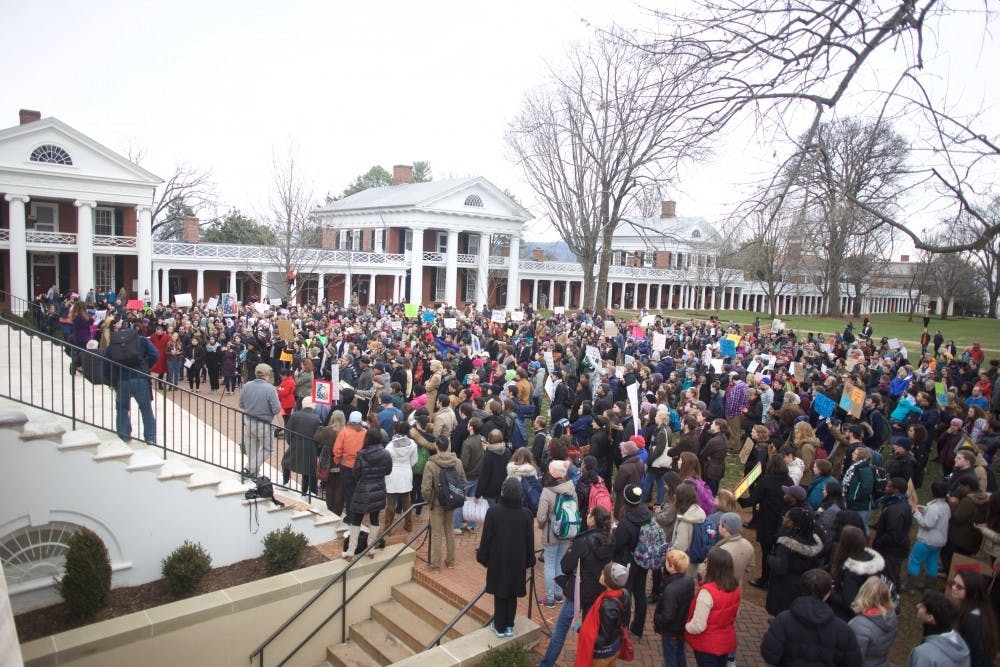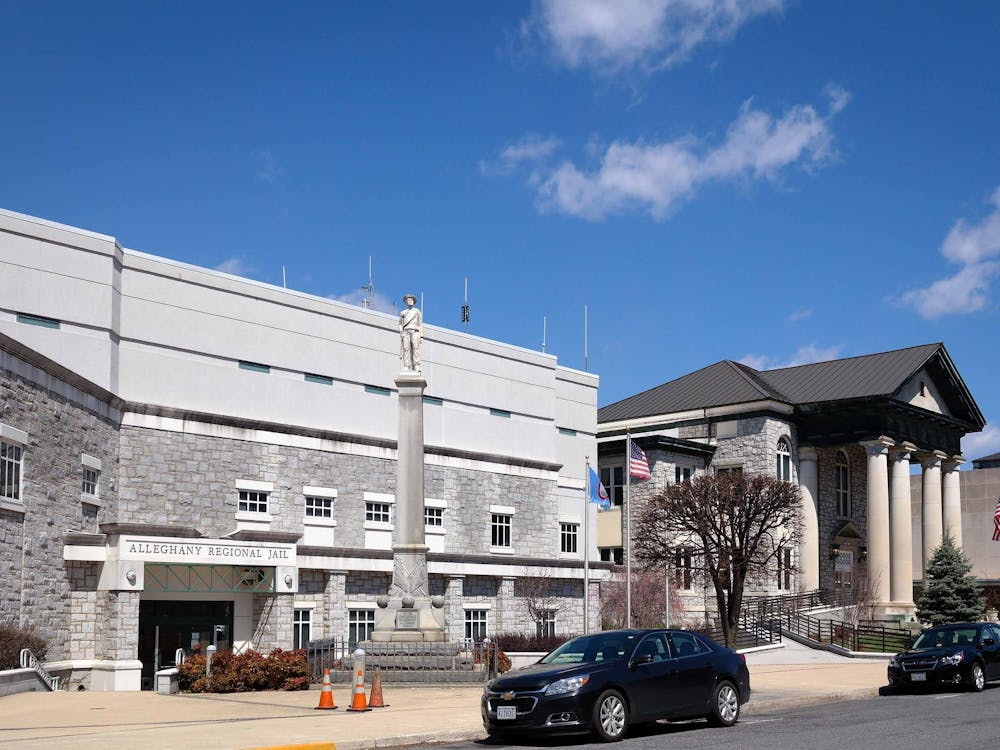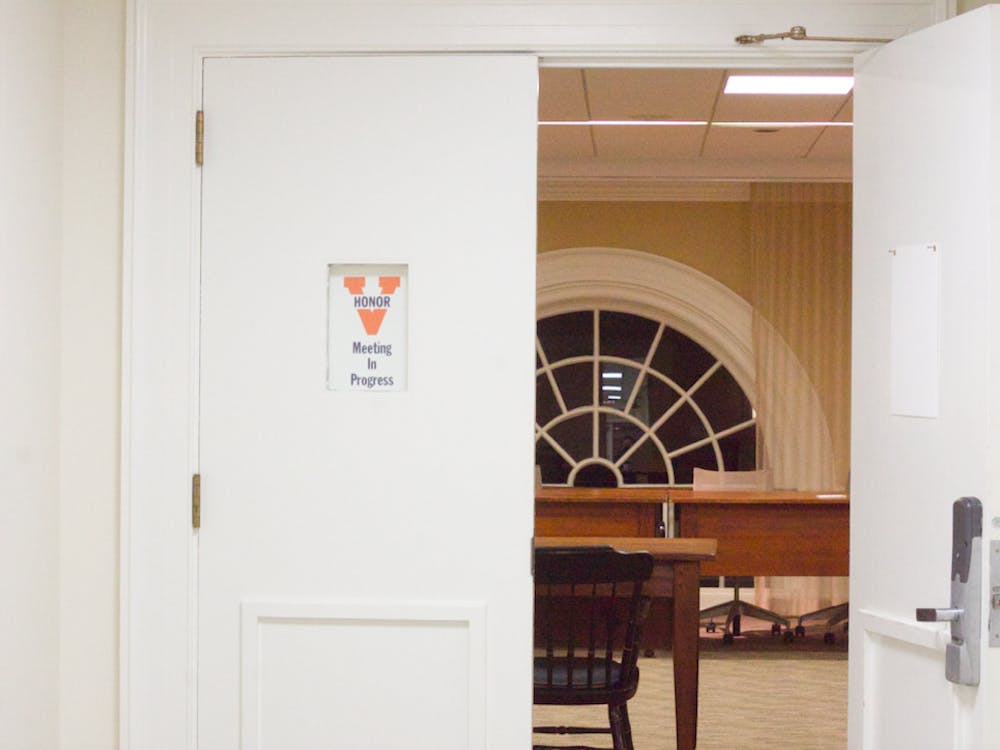While serving as a Kenan Fellow of the Academical Village this past summer, I researched the sonic history of the University. I discovered a common narrative of our University’s past — an early period dominated by “noise,” riots and protest, followed by a “quiet” era which continues into the present. This is a fanciful narrative which unfortunately predominates today. It troubles our own ideas both of what the meaning of “noise” is and of how political the University has always been. With the University’s Bicentennial upon us, it is important that we recognize the breadth of this noisy past, and listen to what it has to teach us as we enter a new chapter in our University’s history.
On May 6, 1810, Thomas Jefferson wrote a letter to Trustees of the East Tennessee College, describing his thoughts on the ideal learning environment. He envisioned a university with lodges for both students and professors — “the whole of these arranged around an open square of grass & trees would make it, what it would be in fact, an academical village, instead of a large & common den of noise, of filth, & of fetid air. it would afford that quiet retirement so friendly to study.”
This letter went largely unnoticed until a professor at Vanderbilt University sent it to President Edwin Alderman in 1923 — it has since become part of the lore of the University’s founding. However, in spite of Jefferson’s vision, student displays of disorderly, riotous and noisy behavior almost jeopardized the future of the University. In an infamous letter from 1825, for example, George Pierson describes the University as a “nursery of bad principles,” and relays a story of students leading an ox to the top floor of the Rotunda, where it was “left to amuse the students … By its noisy bellowings.” The subsequent period of bad behavior, as the usual story goes, culminated with the shooting of Prof. John A. G. Davis in 1840, a turning point in the University’s history that led to a more disciplined student body and the institution of the Honor System.
Yet, my research shows that this narrative is not borne out by the evidence. Moreover, it clouds our understanding of recent events and their supposedly “unprecedented” character. The “Unite the Right” Rally was not the first time the University and the larger Charlottesville community was terrorized by a group of white supremacists. Philena Carkin, a teacher of the Charlottesville freedmen during Reconstruction, writes of the “Calithump,” a kind of noisy parade — “Woe to the unfortunate individual … Who in any way gained the ill will of one of these students. With faces masked, and torches made of brooms dipped in tar and lighted they would march to his house to the music of tin horns, and surrounding the building make night hideous as only yelling demons can.”
These University students, according to Carkin, often terrorized her and the local black community, leaving behind Ku Klux Klan symbols and breaking window panes. When we hear of recent events in Charlottesville as being “unprecedented,” we should instead see how familiar they are to the neighborhood, how familiar the history of white supremacy is to the University and the nation at large.
The noise and violence of Aug. 11 and 12 also showed a University administration repeating its own past without recognizing it, ultimately failing to acknowledge and respond appropriately to its political environment. Following the Kent State shootings in May 1970, University students occupied Maury Hall, surrounded Carr’s Hill and blocked the intersection at University Avenue and Rugby Road. Their demands were for an end to the war in Vietnam and Cambodia, for a living wage for staff, for a more diverse and representative student body and faculty and for a more engaged and politically aware University administration — demands strikingly similar to more recent demands from the student body. These events were also described as “unprecedented” by the University administration, which found itself unprepared because of an “It can’t happen here” attitude.
What all of these and many more events tell us is that the University has always been saturated with noisy protests, violence and unrest. Noise can be a sign of political upheaval, of cultural dynamics and of a failure to reconcile the past with the present. It is odd that Jefferson believed in the noise of revolution and democracy, and yet envisioned his University as a quiet and detached utopia. We must dispel this myth and recognize the truly political nature of the University. Our Academical Village is profoundly intertwined with events of local, national and global significance. And as we heard after Aug. 11 and 12, the world is now profoundly affected by what takes place here on Grounds. If we willingly deafen ourselves to our University’s noisy history, we will make the same mistakes over and over again, and will fail not only our community, but ourselves as well. Only after addressing this reality can we confidently enter a new century for the University.
Kyle Chattleton is a PhD Candidate at the University of Virginia working on a dissertation concerning the role of sound in contemporary American protests.






